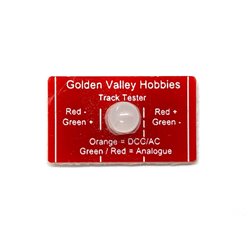Generally, plastic model plane kits do not come with plinths supplied. Nowadays, the majority of kits are designed to...
No products
Product successfully added to your shopping cart
There are 0 items in your cart. There is 1 item in your cart.
Search Tips
Christmas and New Year
We are dispatching orders every weekday apart from Christmas Day, Boxing Day and New Year's Day.
If you order is time critical, select next day delivery at checkout.
The shop in Sandown is closed from 25th December, reopening on 30th December.
Tips for smooth model railway track transitions
As any seasoned model railway enthusiast knows, achieving seamless track transitions is crucial for ensuring a realistic and reliable running experience on your layout. Nothing spoils the immersive illusion more than clunky track joints or unsightly gaps between sections. Fortunately, with a bit of careful planning and some simple techniques, you can create smooth, imperceptible transitions that will have your trains gliding effortlessly across your meticulously crafted landscape.
The first step is to pay close attention to the track laying process from the very beginning. Make sure your trackbed is perfectly level and secure before affixing any rails. Any unevenness or shifting in the foundation will inevitably lead to problems further down the line. Use a spirit level liberally to check for flatness and consider incorporating underlay or cork for added stability.
When it comes time to join individual pieces of track, take your time and exercise maximum precision. You may want to file down or file back the ends of the rails to achieve a perfectly flush join and use rail joiners for a tight, snug fit. For particularly tricky transitions, such as between different track scales or types, you may need to invest in specialty products like track alignment pins or insulated rail joiners.
Don't neglect the visual elements, either. Carefully ballast the track and landscape the surrounding terrain to visually integrate the different sections. Blend in any track gaps with realistic ground cover and use strategic plantings or other scenic elements to draw the eye away from potential transition points. With a bit of artistry, you can create the illusion of a single, continuous stretch of weathered railway cutting through your model landscape.
Maintain a vigilant eye for any issues that may arise and address them promptly. Regularly inspect your track for signs of wear or misalignment and be ready to make adjustments as needed. A little preventative maintenance now can save you from derailments and other frustrations down the road (or should we say "down the track"?)
Click here to receive the tips weekly in your mailbox. You can unsubscribe at any time.










